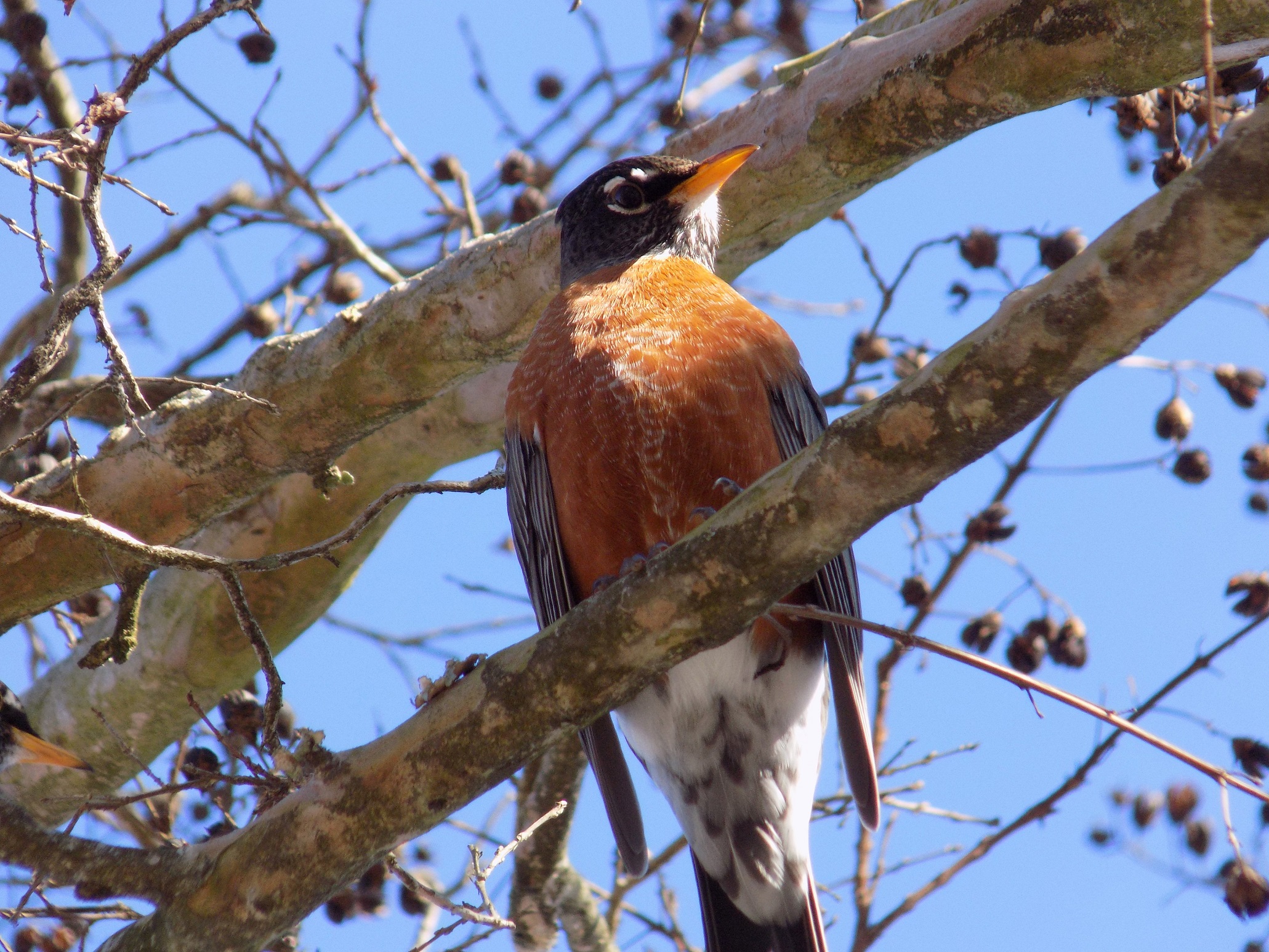
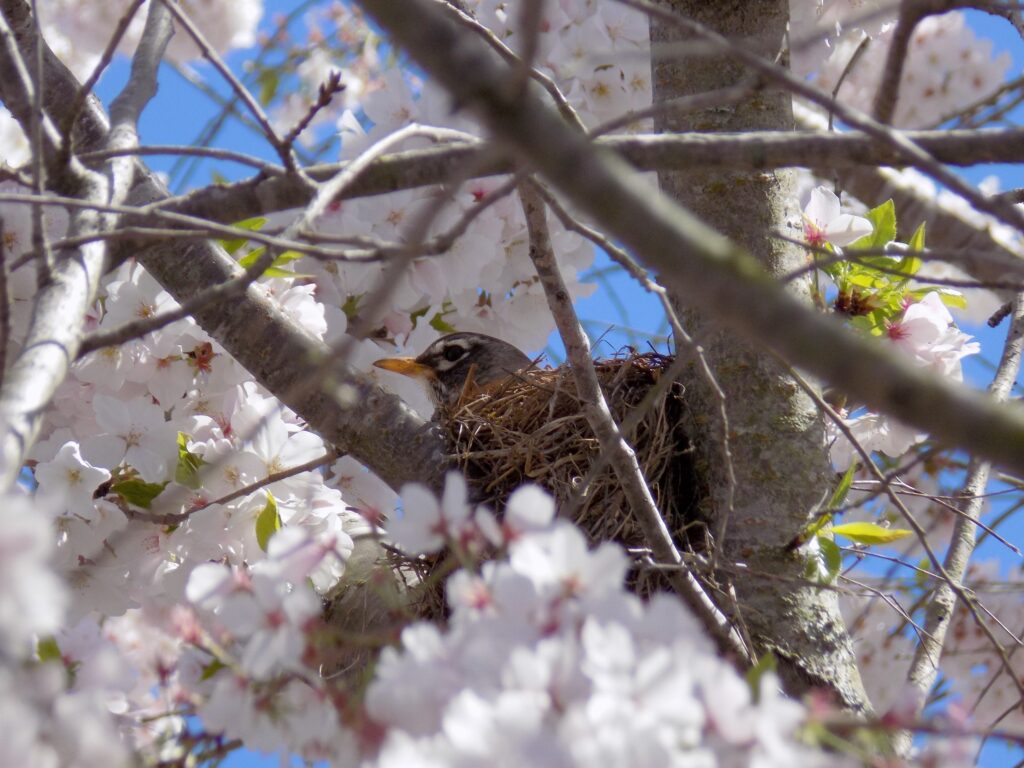
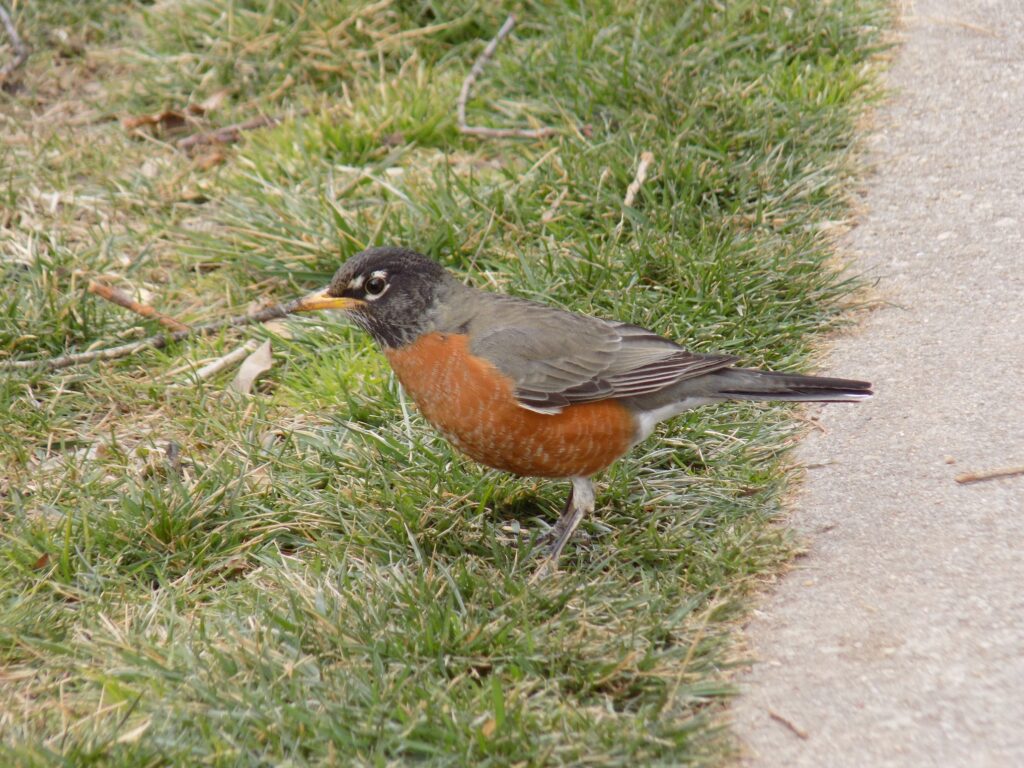
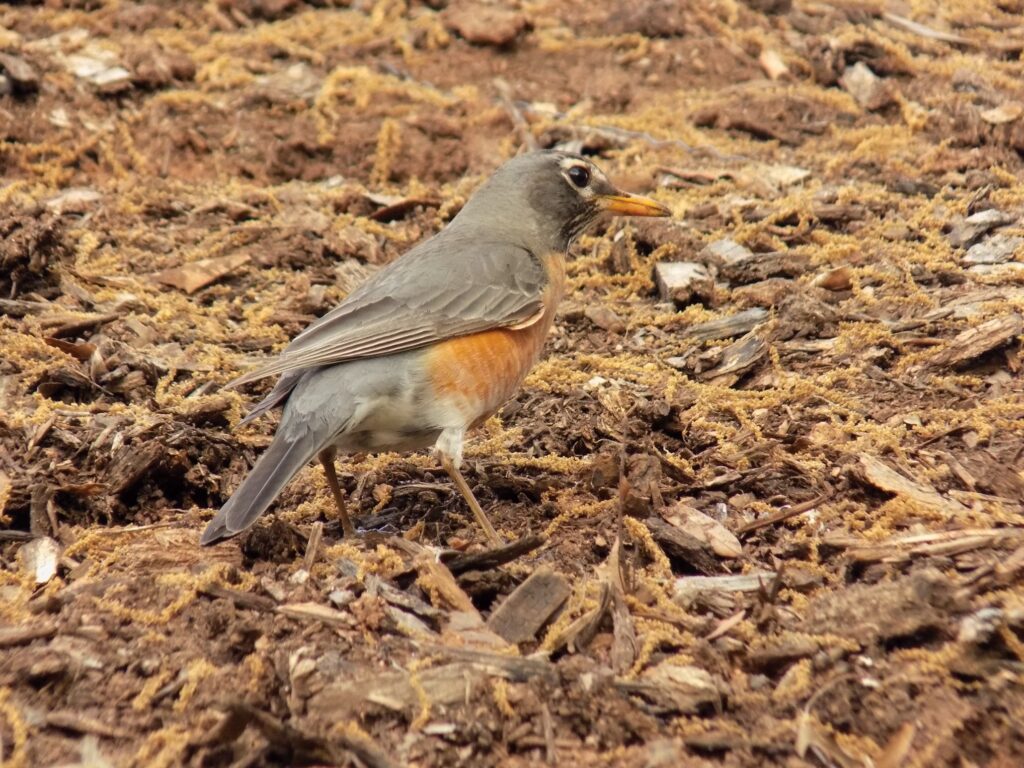
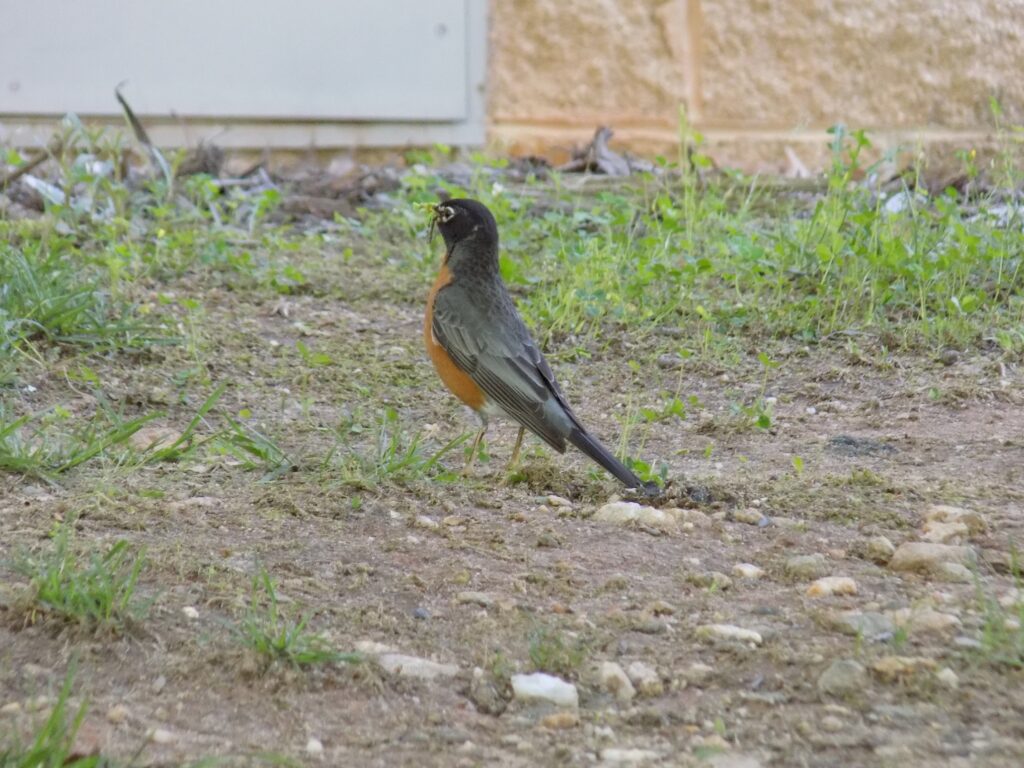
This week for Flora and Fauna Friday we’re bob-bob-bobbing along with the American Robin (Turdus migratorius).
The American Robin is our largest member of the Thrush family as well as the strongest contender for most common bird in North America, with a population estimated at over 300 million. He sings a jarring fluty tune through a carrot-orange bill while his salt-and-pepper beard shudders to keep the beat. Dark glassy eyes look out beyond his perch through broken white eyeliner on a carbon-black head. His shale-gray back reflects a wisp of the morning sun and a red rusting chest puffs out with a gulp of brisk spring air. The male Robin in his territory is a handsome and familiar site across the country. His feminine counterpart is not as contrasting or vociferous as she bobs through the stalks of a dewy pasture’s hedgerow, beak stacked with inchworms. Both make their way to Edisto each year at the dawn of fall with scores more couples in the wing. They mingle with the local for the winter before fleeing from the summer’s sweltering heat.
American Robins are primarily a migratory species, returning to the South for every winter, but can be found year round in certain sections of our state. They’re most easily found in wet lawns, field edges, and the understory of moist forests as they loose their windy tune and short step across the ground. American Robins live on a diet of arthropods and fruit. In the winter their diet is primarily fruits, including holly, crabapple, and redcedar. As the spring approaches and the weather warms, they shift their meals to earthworms, spiders, and inchworms. Robins are best known for their habit of bobbing along as they search for snacks and collect longitudinally extended critters in their mouth. Many songbirds can’t walk and can only move on the ground by jumping due to how their leg tendons are shaped. However, Robins are one of the species that can walk just fine, they just choose not to a lot. You’ll oft see them sprint short distances on open ground. The bobbing helps Robins move in tall grass, as they jump from footing to footing. The worm hoarding is for efficiency’s sake. This is simply so mothers don’t have to make so many trips to and from the nest. It also guarantees they have enough pureed worms to go around for the little ones.